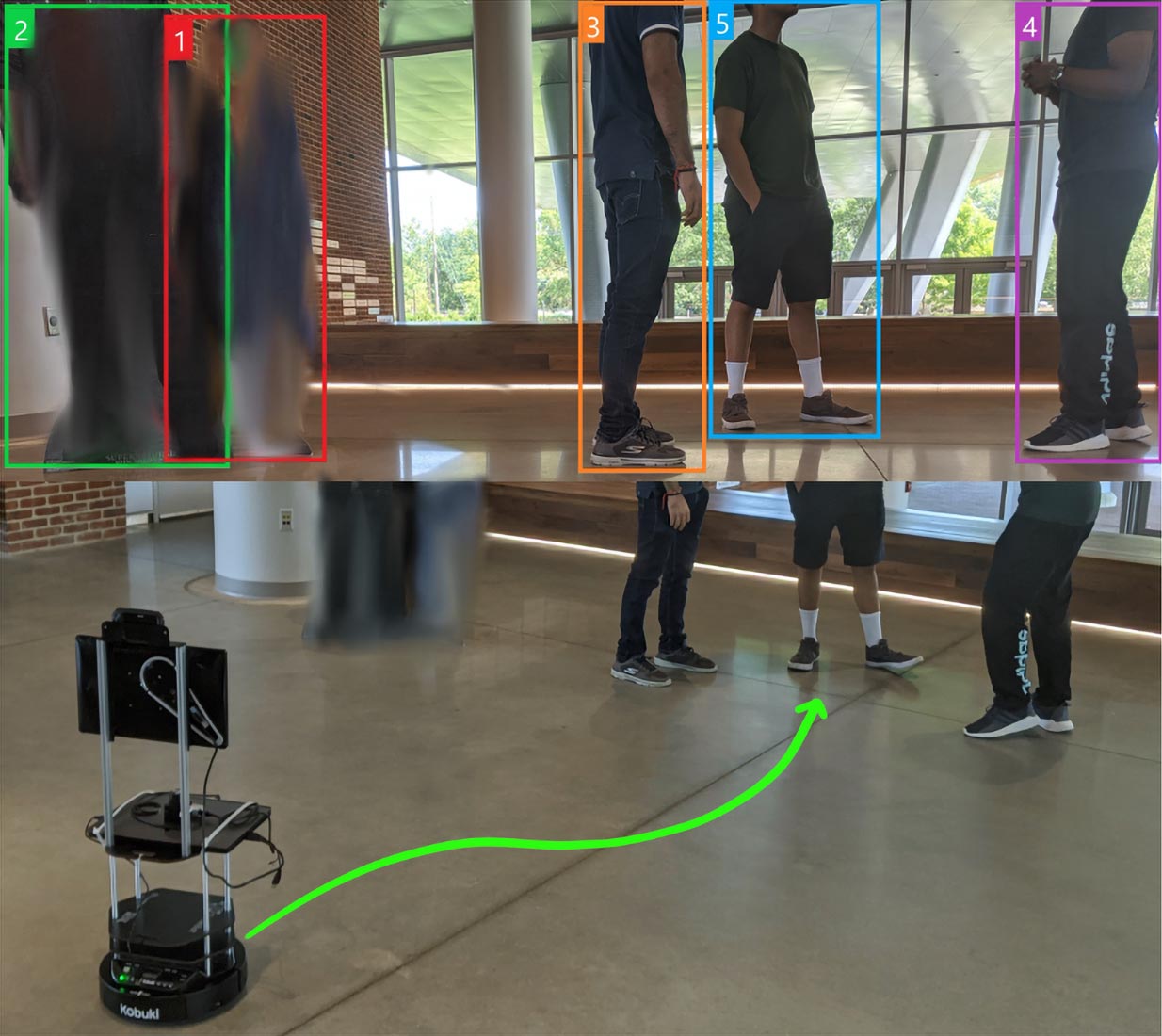Busted for Not Social Distancing by a COVID-19 Mobile Surveillance Robot
0 View
Share this Video
- Publish Date:
- 1 December, 2021
- Category:
- Covid
- Video License
- Standard License
- Imported From:
- Youtube
Tags

The robot detects non-compliance with social distancing standards, groups non-compliant pedestrians and autonomously navigates to the static group with the most people in it (a group of 3 people in this scenario). The robot encourages the non-compliant pedestrians to separate and maintain at least 2 meters of social distancing by displaying a message on the mounted screen. The CS robot also captures thermal images of the scene and transmits them to appropriate security/care personnel. Credit: Sathyamoorthy et al., 2021, PLOS ONE, CC-BY 4.0
Surveillance robot can help reduce the spread of disease and also help tracing contacts.
A new strategy to reduce the spread of COVID-19 uses a mobile robot that detects people in crowds who do not follow social distancing rules, navigates to them and encourages them to break up. Adarsh Jagan Sathyamoorthy of the University of Maryland, College Park, and colleagues present these findings Dec. 1, 2021 in the open-access journal PLOS ONE.
Previous research has shown that keeping a distance of at least two meters from others can reduce the spread of COVID-19. Technology-based methods, such as strategies involving Wi-Fi and Bluetooth, show promise to help detect and deter social distancing errors. However, many such approaches require the participation of individuals or existing infrastructure, so robots have emerged as a potential tool to address social distancing in crowds.
Now, Sathyamoorthy and colleagues have developed a new way to use an autonomous mobile robot for this. The robot can detect and navigate to intrusions using its own Red Green Blue-Depth (RGB-D) camera and 2D LiDAR (Light Detection and Ranging) sensor, and can use an existing CCTV system, if available. Once it reaches the breach, the robot encourages people to part ways via text appearing on a mounted display.
The robot uses a new system to classify people who have broken social distancing rules into different groups, prioritize them based on whether they’re standing still or moving, and then navigate to them. This system uses a machine learning method known as Deep Reinforcement Learning and Frozone, an algorithm previously developed by several of the same researchers to help robots navigate crowds.
The researchers tested their method by having volunteers perform social distancing scenarios while standing still, walking or moving erratically. Their robot was able to detect and deal with most breaches, and CCTV improved its performance.
The robot also uses a thermal camera that can detect people with possible fevers, helping to trace contacts, while also taking steps to ensure privacy protection and de-identification.
Further research is needed to validate and refine this method, for example by investigating how the presence of robots influences the behavior of people in crowds.
The authors add: “Many health professionals and security personnel had to put their health at risk to serve the public during the COVID-19 pandemic. The core purpose of our work is to provide them with tools to serve their communities safely and efficiently.”










